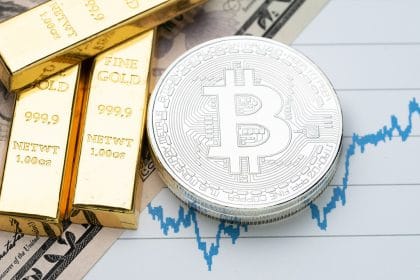This past year has been a huge test for financial platforms.
The first two quarters crashed the markets, as “coronavirus” and “lockdown” became the defining terms around the world. The reaction of financial assets was entirely predictable: oil plummeted to historic lows, including going negative on some exchanges, the dollar strengthened significantly relative to every other currency, and by the close of the first quarter some analysts were already predicting Bitcoin’s downfall. Nevertheless, trends toward stabilization and recovery were apparent even in the second quarter. Gradual border openings in the summer and lifted lockdowns created the illusion of victory over the coronavirus, enough that in the third quarter oil prices stabilized between $40 and $45 per barrel and global manufacturing livened up. Even so, financial assets took their time with making up their losses from the pandemic, with investors waiting for the outcome of the US presidential election. At that point, the only asset in traditional markets showing stable growth was gold, which exceeded $2000 per ounce for the first time ever in 2020. Trump’s loss would mean continued stimulation of the economy from the Federal Reserve, so market players on all financial platforms were watching all the US election news very closely. Biden’s victory, followed by several COVID-19 vaccines, opened up the markets, which took off toward new historic highs.
The Cryptocurrency Market
The 2020 crypto market proved to be a wonder of rapid recovery and reattainment of historic highs.
Bitcoin
The crash in Bitcoin prices to below $5000 in Q1 had many analysts seriously talking about the end of the crypto industry. The rapid recovery of both the main cryptocurrency and altcoins, however, fundamentally changed the experts’ outlook. Bitcoin became an alternative to gold not just in the crypto world, but on traditional financial exchanges as well. At first BTC’s growth was attributed to the halving in May, after which its USD exchange rate was expected to decrease gradually. But as the main cryptocurrency’s price rose above $10000 in Q3, it became apparent to investors that its growth was here to stay. At the end of the year, the exchange rate surpassed $28,000, an all-time record. In 2021 the Bitcoin price will continue its trek into terra incognita, hitting new heights; in the first half of the year it is expected to fluctuate within a wide range of $25,000 to $50,000.
Ethereum
Ethereum’s growth in 2020 was equally impressive. It spent the whole year preparing for a transition to the PoS consensus algorithm. A more significant influence on the second-largest cryptocurrency, however, was the growing popularity of DeFi tokens, which are created on the Ethereum platform. As a result, investors weren’t fazed by anything, not even news of high commissions on the network: the ETH/USD exchange rate grew slowly, but steadily. Ether entered the new year at $730, according to the CEX.IO exchange rate, and will likely continue to grow toward $1000 in 2021.
XRP
It’s worth noting that not everyone on the crypto market ended up in the black. The dramatic drop in XRP prices – over 40% – after the SEC lawsuit at the end of the year added a few dark notes to crypto’s rosy picture. Crypto investors weathered the storm and stayed in the digital asset market, redistributing their funds from XRP to other cryptocurrencies. Ripple‘s XRP ended up the outsider among the main currencies, ending the year in the red. It remains to be seen whether XRP can recover in 2021.
Trends for Key Assets in 2020
- Brent Crude down from $66.41 to $51.32 (-22.72%).
- Gold up from $1,557 to $1,894 (+21.64%).
- Bitcoin up from $7,196 to $28,300 (+293.27%).
- Ether up from $129.21 to $730 (+464.97%).
Executive Director at CEX.IO. His area of responsibility includes customer relationships with institutional and VIP-clients, overseeing the creation of the company’s development strategy, new products, markets and partnerships. As a member of the board of directors, Konstantin is also responsible for corporate governance.



